VERY RARE! Vietnam War "Mỹ Lai Massacre March 16-19 of 1968" 1970 Department of Defense After-Action Investigation Report (200+ Pages)





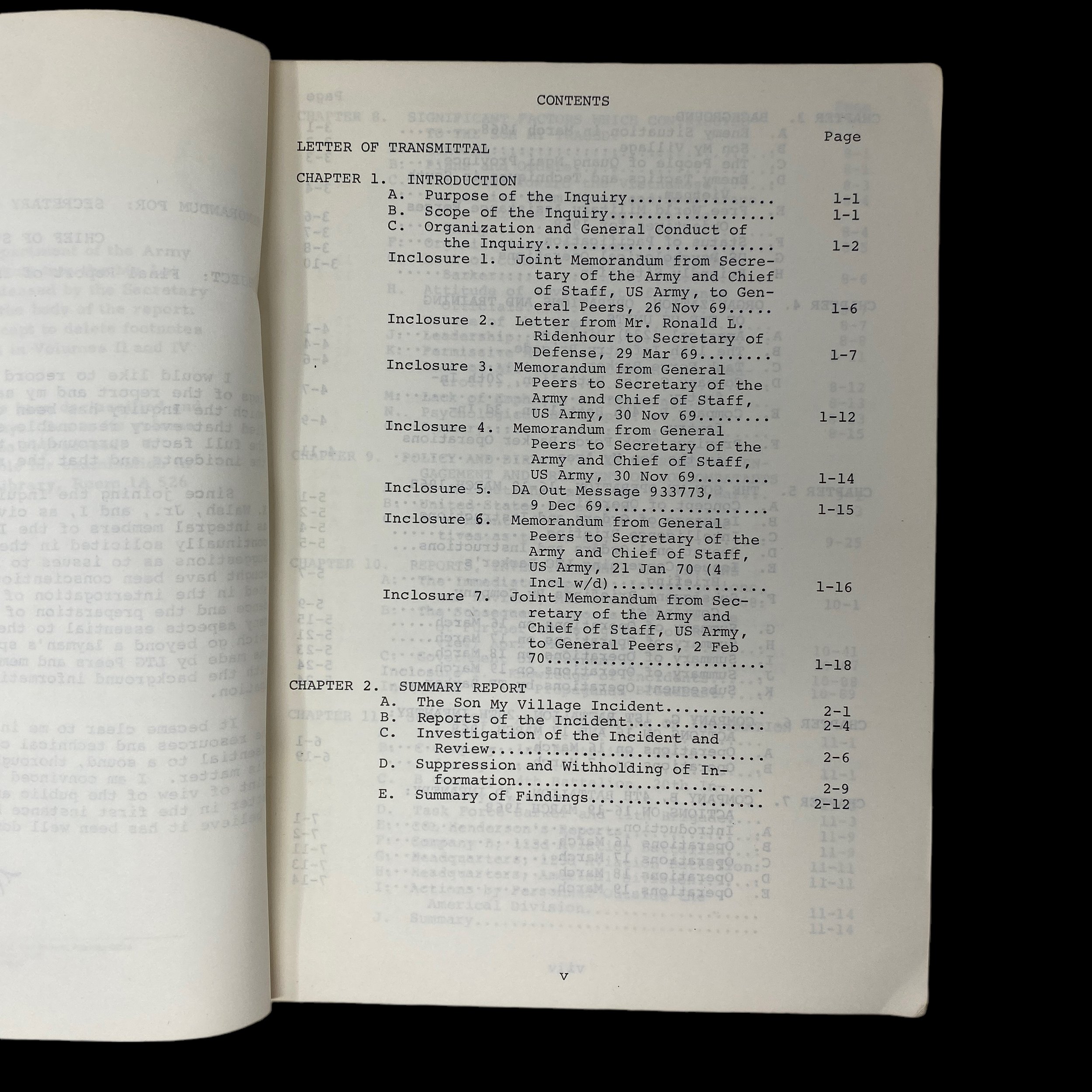





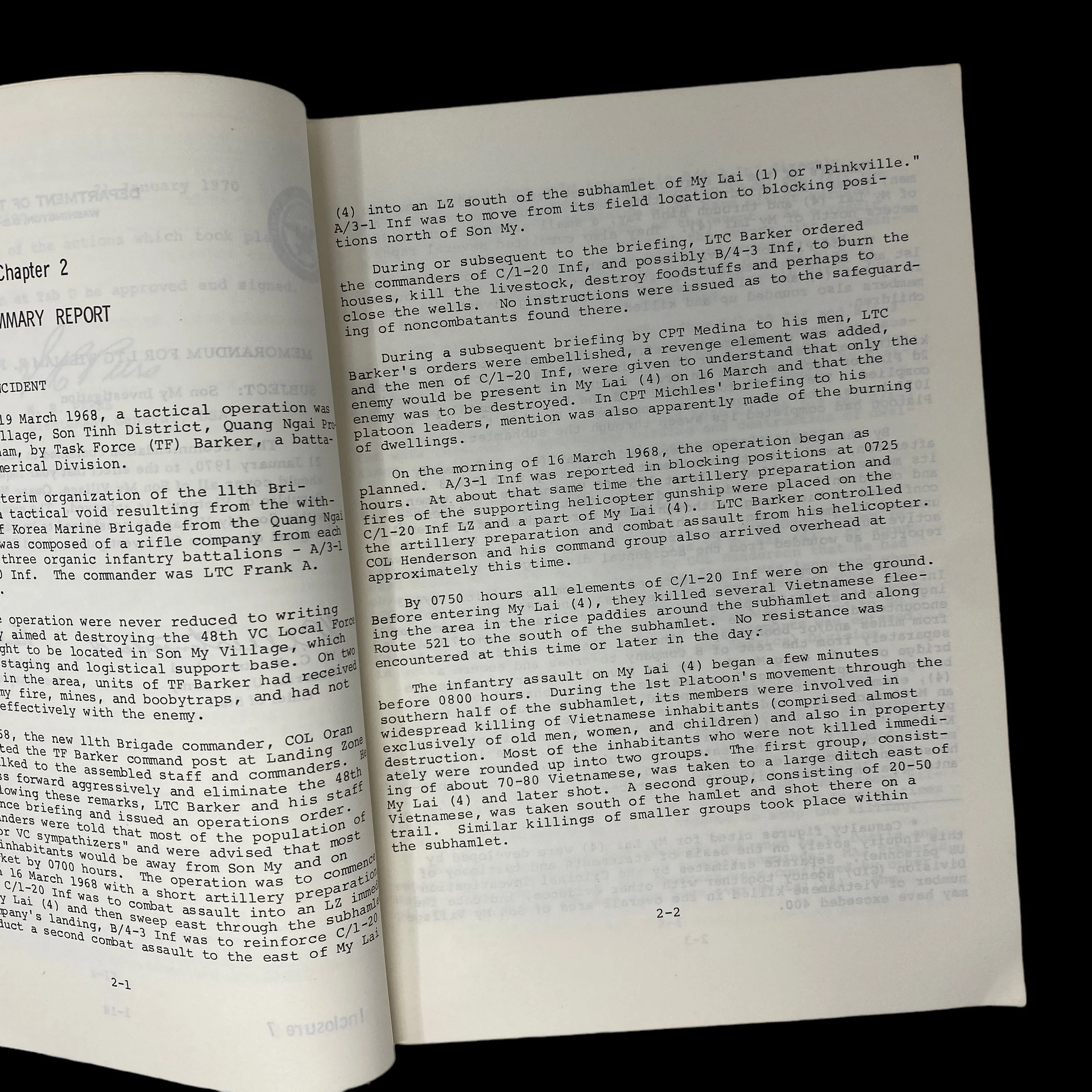























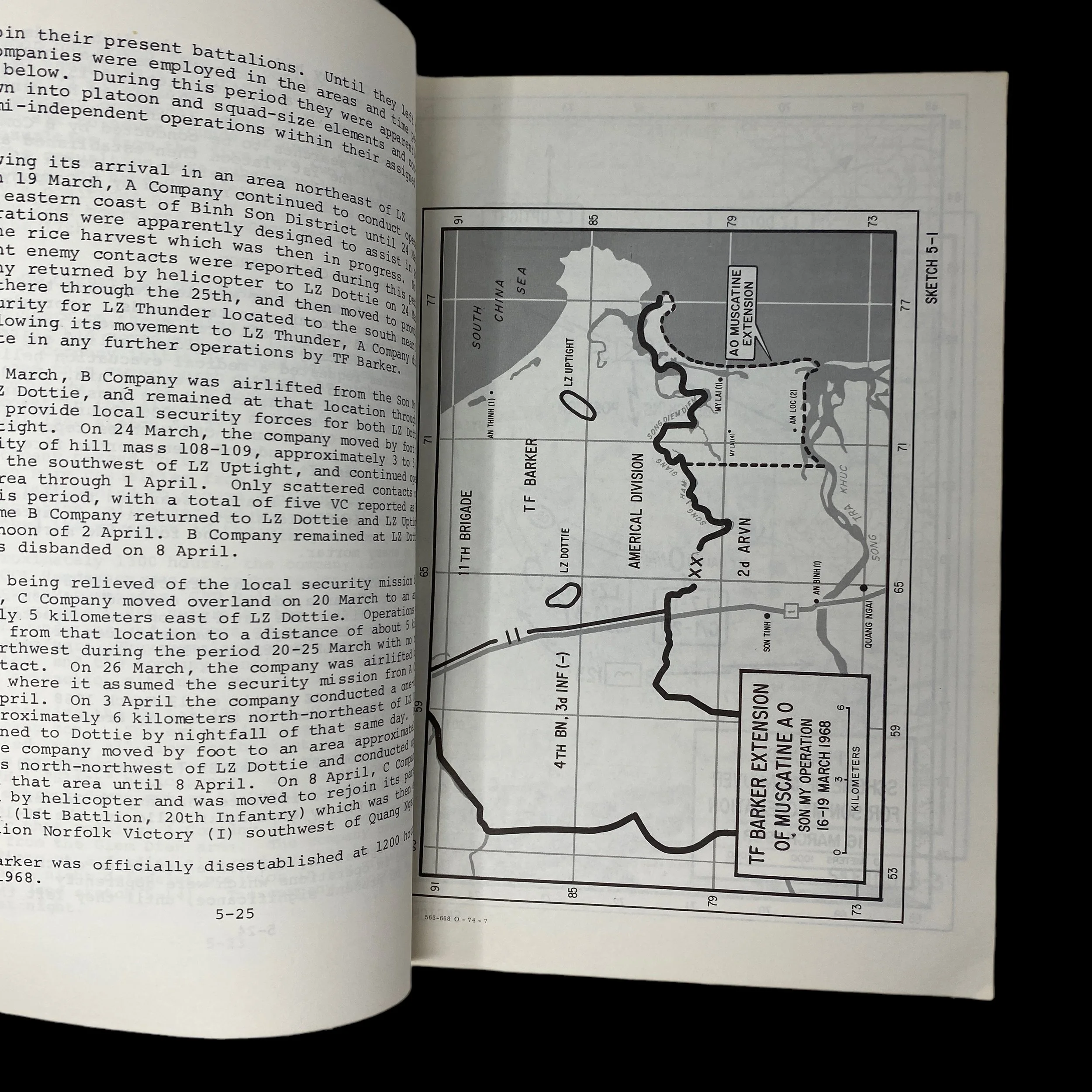



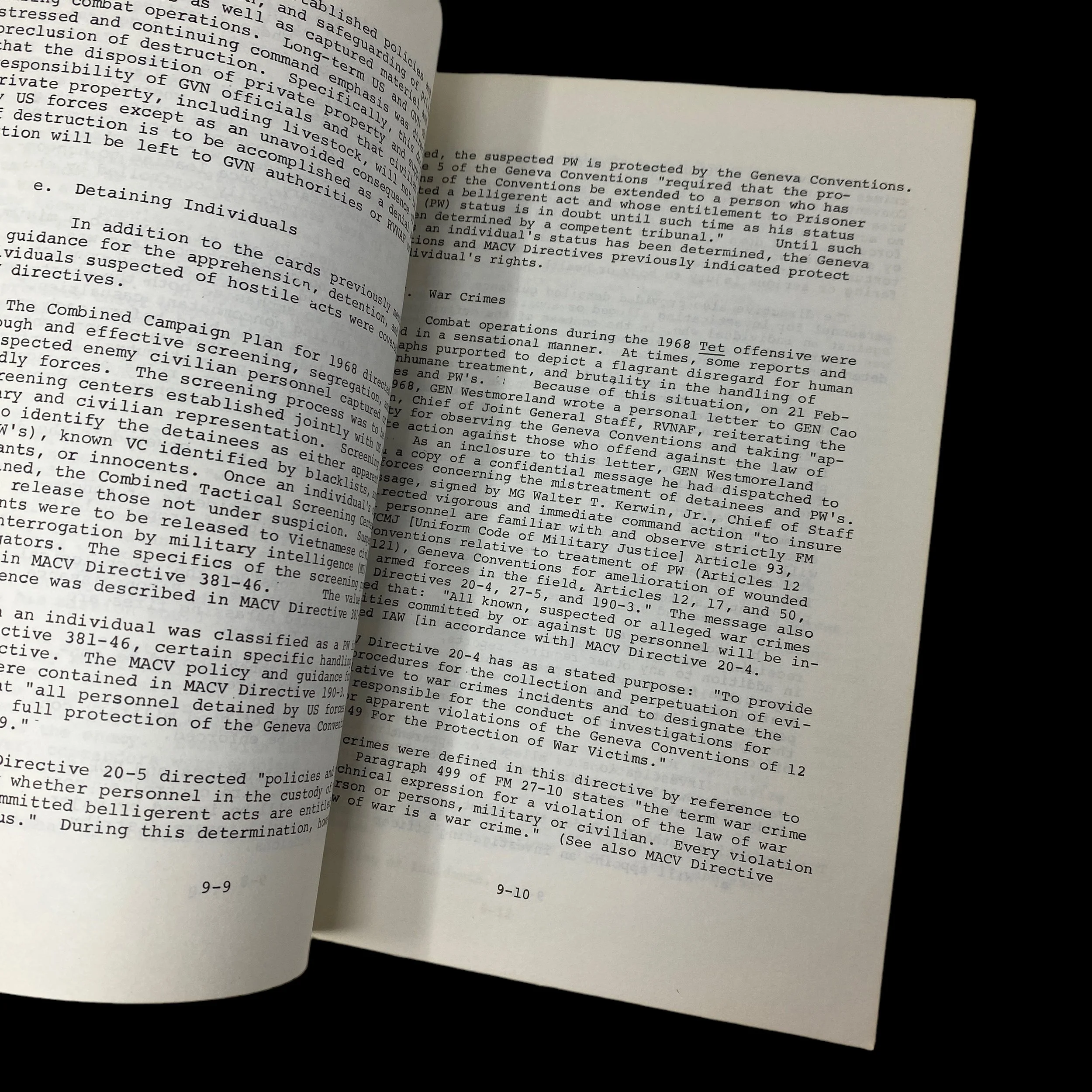
















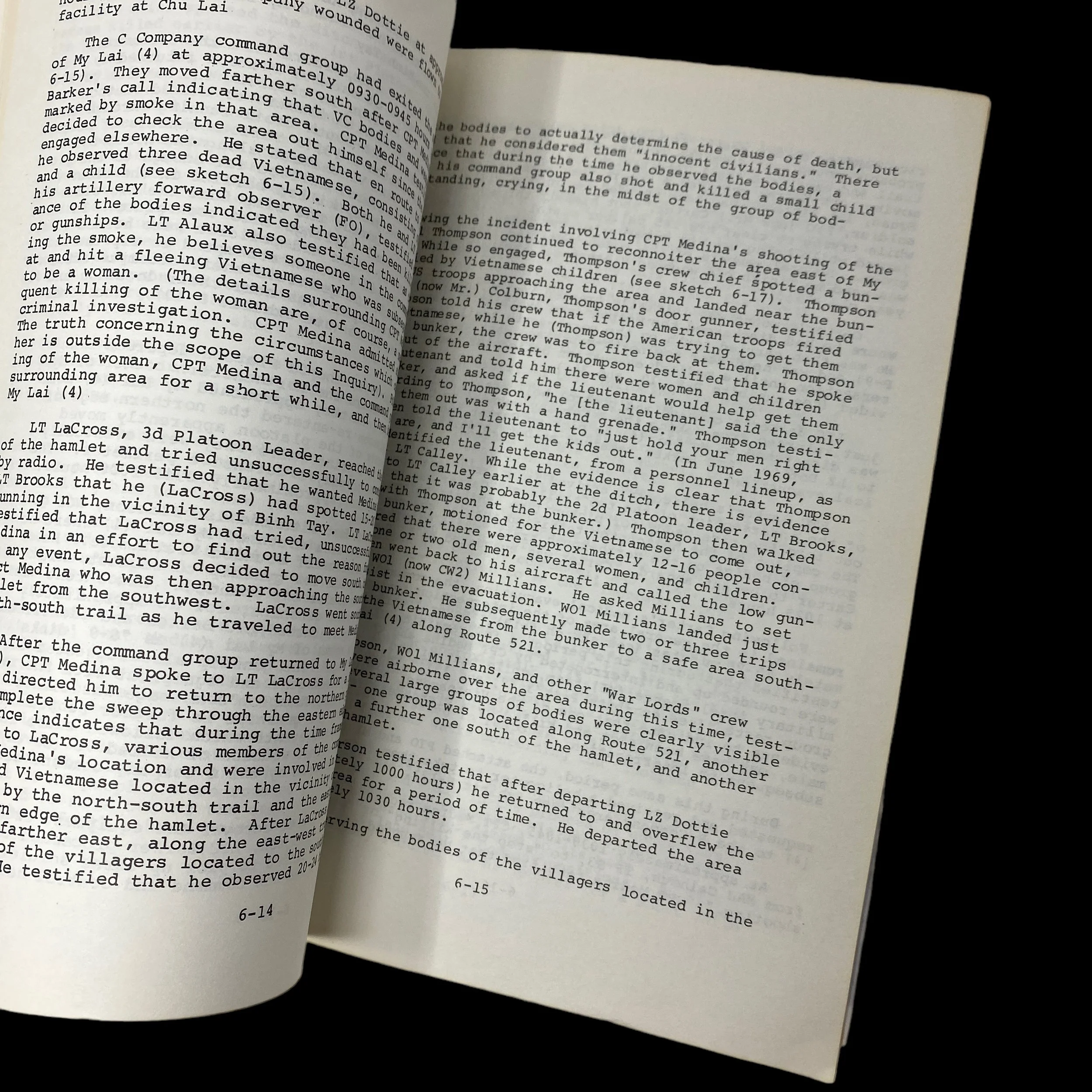


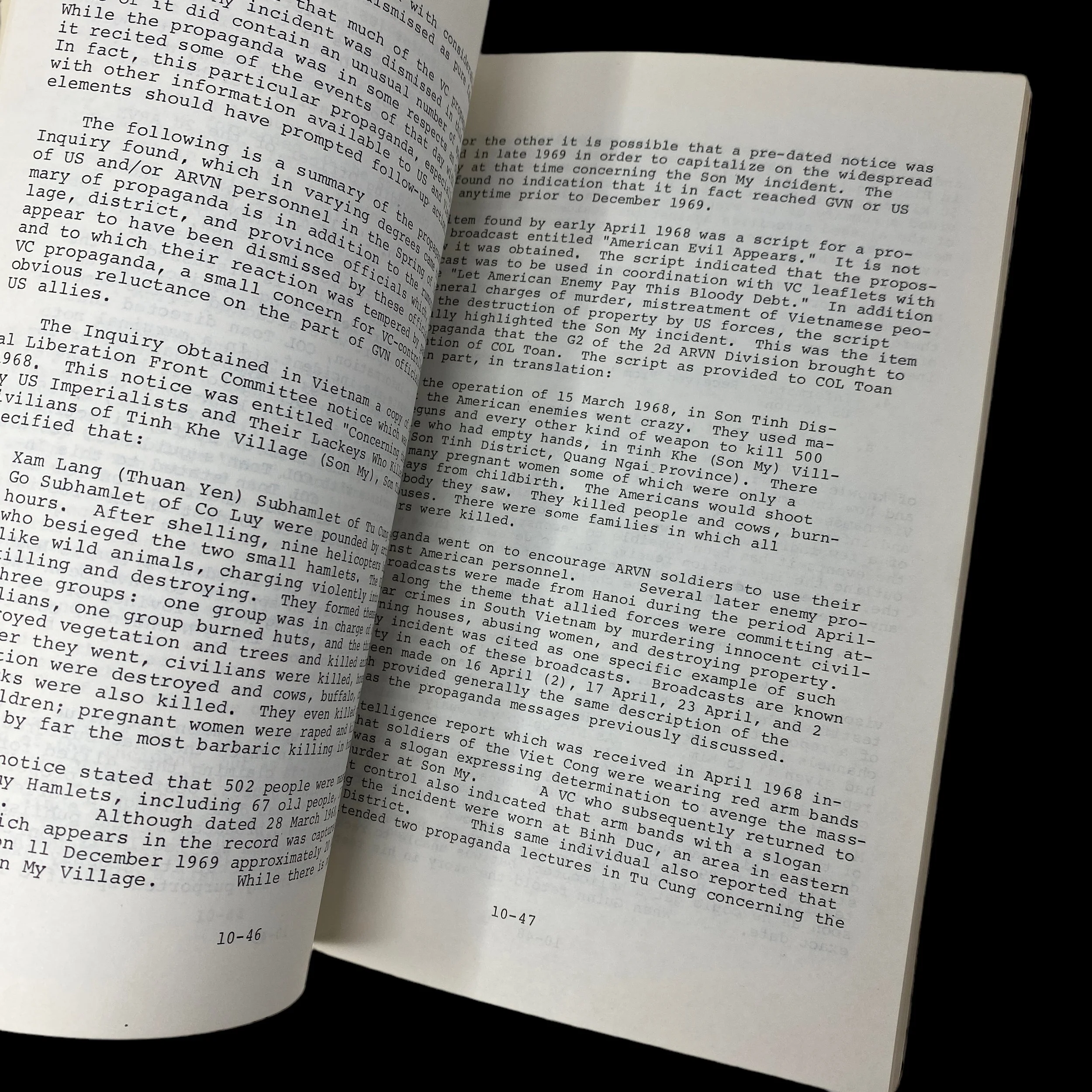



VERY RARE! Vietnam War "Mỹ Lai Massacre March 16-19 of 1968" 1970 Department of Defense After-Action Investigation Report (200+ Pages)
Comes with hand-signed C.O.A.
This extremely rare and museum-grade Vietnam War artifact is an original 1970 Department of Defense after-action Report of Investigation and details the Department of the Army Review of the Preliminary Investigations into the My Lai Incident that occurred on March 16-19 of 1968.
This 200+ investigation report details the Mỹ Lai massacre and the mass murder of unarmed South Vietnamese civilians by United States troops in Sơn Tịnh district, South Vietnam, on 16 March 1968 during the Vietnam War.
Between 347 and 504 unarmed people were killed by U.S. Army soldiers from Company C, 1st Battalion, 20th Infantry Regiment and Company B, 4th Battalion, 3rd Infantry Regiment, 11th Brigade, 23rd (Americal) Infantry Division. Victims included men, women, children, and infants. Some of the women were gang-raped and their bodies mutilated, and some soldiers mutilated and raped children who were as young as 12. Twenty-six soldiers were charged with criminal offenses, but only Lieutenant William Calley Jr., a platoon leader in C Company, was convicted. Found guilty of murdering 22 villagers, he was originally given a life sentence but served three-and-a-half years under house arrest after President Richard Nixon commuted his sentence.
This is one of the last remaining original investigation reports of the My Lai incident to exist. This report includes unseen diagrams, maps, and sketches based on dozens of after-action reports and interviews to uncover the truth about the My Lai Massacre. This is a once-in-a-lifetime piece of history from one of the most infamous incidents of the Vietnam War and the public cry for peace.
On March 16, 1968 in Vietnam, the small hamlet of My Lai (4) was completely destroyed by American soldiers expecting to engage in a tough fight with a brigade of enemy soldiers of the National Liberation Front (NLF). During the chaos, livestock were killed and left to rot, food caches were destroyed, huts were set on fire, underground tunnel systems were destroyed, women were raped and beaten, and between 100 to 500 people were brutally murdered. Some American soldiers systematically moved through the hamlet killing civilians while others struggled or refused to take part in the slaughter.
Some of the Vietnamese civilians tried to run or hide from the Americans, while others stood their ground hoping to seem unthreatening; however, American soldiers killed indiscriminately. Vietnamese women, old men, and children were herded into groups and shot for no apparent reason. The soldiers who destroyed My Lai (4) did nothing to report the massacre to their superiors. Reports of the operation were falsified and included no mention of the vast number of civilians who had been killed. The number of people killed was drastically reduced from an estimated 500 to 128.
For the most part, the officers who received the reports of the My Lai Massacre did not question anything submitted to them. The few questions that did arise were quickly silenced and the incident was covered-up. The My Lai Massacre did not resurface until 1969. when an ex-G.I. began writing letters to officials in the military and government to describe the brutal operation. A massacre worse than any recorded in American military history, the My Lai Massacre has lived on past the rest of the Vietnam War. At the time, it shocked the American public and showed many people in the United States that the American soldier did not always do the right thing. The memory and consequences of My Lai pervade American society's thinking to the present day. A small subhamlet of the Son My village in the Quang Ngai Province of South Vietnam, My Lai (4) became far more influential to the American presence in Vietnam than the soldiers who participated in the atrocity could have ever guessed.
Scholars trying to determine why the massacre and the ensuing cover-up happened have studied My Lai for more than thirty years. The military held two separate investigations into My Lai in order to find out who or what could be blamed for such an atrocity. The anti-war group, Vietnam Veterans Against the War (VVAW), held public hearings in 1971 discussing the issue of American atrocities in Vietnam. Public debate raged in the late 1960s and early 1970s about the fate of the men who had destroyed the hamlet and its inhabitants.
In assessing the My Lai Massacre, it becomes obvious that nothing is black and white. Nothing about the massacre or the cover-up is simple and clear-cut. Conflicting testimony, different explanations, and different sources of blame make the My Lai Massacre one of the most controversial topics in American History